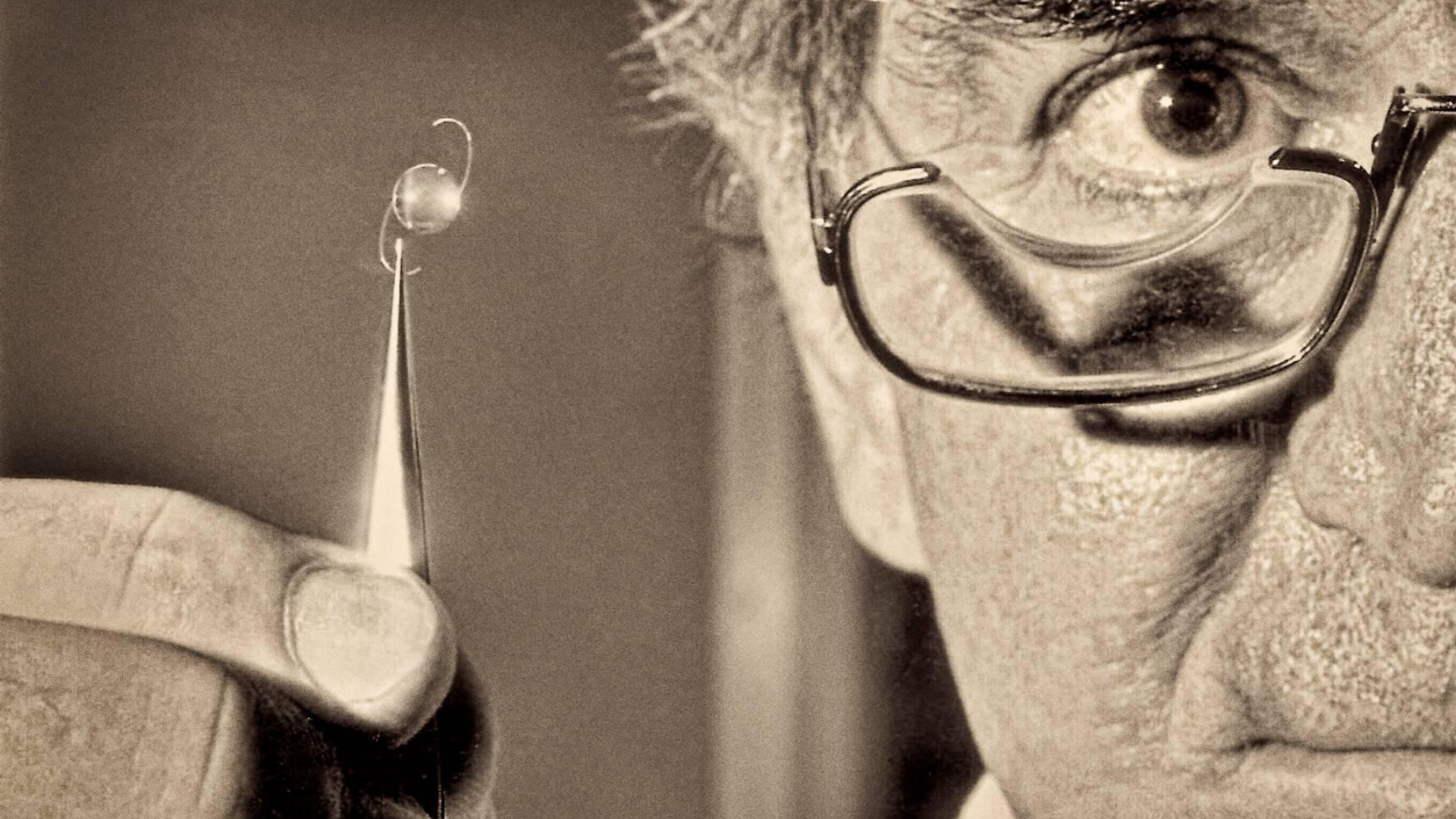
What is an IOL?
An "intraocular lens" literally means a lens placed inside the eye. It's often referred to simply as an IOL. It is a precisely designed and crafted tiny piece of plastic that is used to replace the natural lens of the eye. The exchange of a natural lens affected by cataract with an IOL happens during a microsurgical procedure called cataract surgery. During surgery, the eye gains a synthetic lens that is unclouded by cataract.
Since Fred was alive, the cost of the intraocular lens has significantly reduced, and this has made cataract surgery more affordable in many parts of the world.
Cataracts commonly occur as a part of ageing. However, when very young children develop cataract, cataract surgery may be performed without implanting an IOL. This is because their eyes are still growing and connections to and within the brain are still developing. The child is provided with appropriate glasses and an ophthalmologist monitors their progress and decides when to implant an IOL at a second surgical procedure.
The story of a little piece of plastic making a huge difference


How does the IOL work?
The natural lens of the eye sits in a transparent capsule behind the iris and is held in place by ligaments.
Light travels through the natural lens and is brought to focus on the retina at the back of the eye. The retina transforms the light stimuli into electrical impulses that are carried by the optic nerve to the brain. We perceive the light reflected off surfaces as an image.
The IOL works in the same way as the natural lens, except that it’s made of materials such as a plastic commonly called Perspex.
The IOL’s shape and size are designed to fit perfectly inside the lens capsule. A stable and centered IOL provides the best chance of correct focus and clear vision.

How were low-cost IOLs produced?
Cataract is the leading cause of blindness globally - and IOLs are an integral part of restoring sight to someone with cataract.
When Fred was alive, IOLs were expensive – which meant that low-cost cataract surgery was considered an impossibility. However, Fred put the pieces in place to create state-of-the-art intraocular lens factories in Nepal and Eritrea.
The aim was to produce high-quality, low-cost intraocular lenses and meet the needs of the cataract blind in developing nations.

IOL factories
Both laboratories in Eritrea and Nepal opened in 1994 and are now locally managed and independent. They produce around 250,000 lenses every year, which are distributed to more than 50 countries. The creation of these factories meant that one of the biggest costs in cataract surgery was reduced – and by doing this, the ability to perform low-cost surgeries in developing countries has become a reality.
The factories have produced almost eight million lenses since they opened.
Producing low-cost IOLs and finding other ways to minimise the cost of consumables and surgical equipment, means The Foundation has helped make cataract surgery affordable in many disadvantaged communities.
What’s more, the IOL factories provide a world-class, high-technology manufacturing base, generating new export markets for Eritrea and Nepal.
These amazing pieces of plastic are the reason The Foundation can perform a cataract operation for as little as $25.
Disclaimer: the content on this page is not intended to be medical advice. For medical advice, please contact your local health professional.

